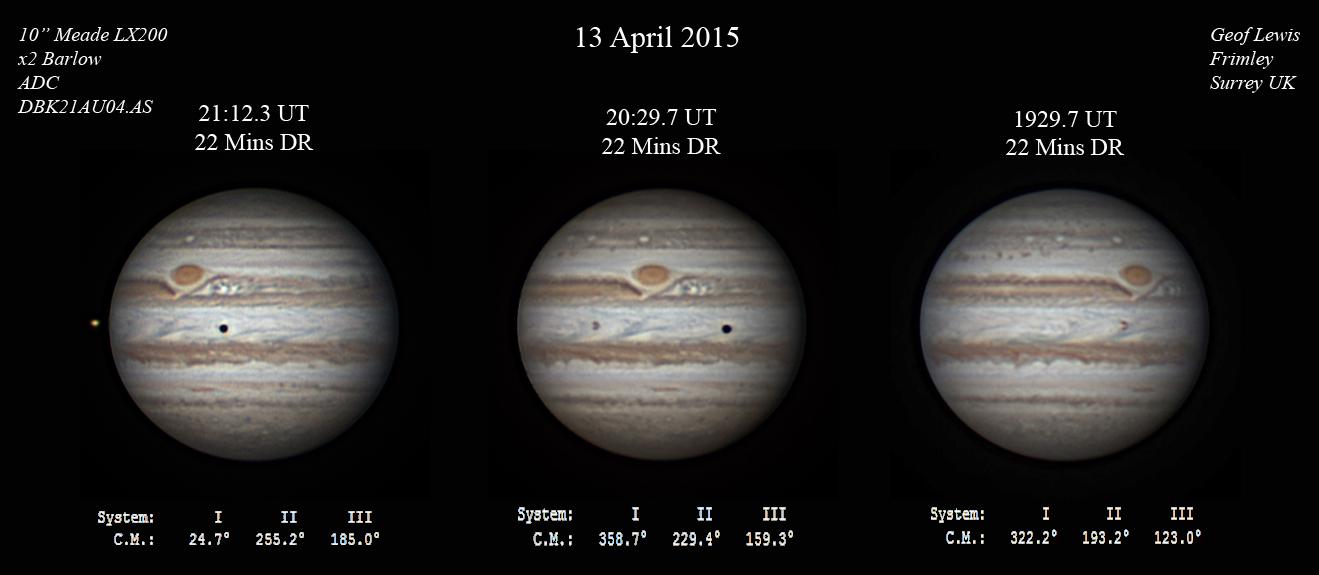Geof Lewis shares his imaging secrets
Geof Lewis achieved a first in his recent talk – a gasp of astonishment. His theme was Planetary Imaging and the gasp came as he was demonstrating the tricks of the trade to improve the level of detail in an image of Jupiter. He showed us one version which seemed OK, certainly I would have been quite pleased to have captured this, but he then flicked on to an improved image. The difference was remarkable!
Geof is one of our members and he has previously given an excellent talk about astrophotography. He began this talk by saying that planetary imaging should, in principle, be one of the easier forms of astrophotography as most planets are bright, therefore easy to find and do not need long exposure times thus obviating the need for tracking, unlike imaging of deep sky objects where the exposure time might be hours rather than seconds and accurate tracking is essential to stay on the object as the Earth rotates. A single shot of a planet such as Jupiter can be good – but that is not good enough or detailed enough for an expert like Geof.
The trick to getting a detailed planet image is to take several short video clips of it and then use software to select suitable images from those available and stack them. Geof has already described the full process in an earlier post ( https://www.farnham-as.co.uk/2015/04/jupiter-continues-to-delight/) and here is what he said about the processing phase. An image “is the result of processing 18-20 1 minute videos, aligned and stacked in Autostakkert, sharpened using wavelets in Registax, then de-rotated and combined in WinJupos. Final sharpening was performed using ImagesPlus, followed by colour balance adjustments and image compilation / annotation in Photoshop”. It sounds complicated and clearly time-consuming but with Geof’s clear explanation it all seemed to make sense and the quality of the results amply justified the considerable input of effort.
The image I have chosen to illustrate this post is a trio of Jupiter images each processed as above which show how quickly Jupiter rotates, most easily seen in the movement of the Great Red Spot. The level of detail is superb. Geof has also captured the transit of Io, one of Jupiter’s moons. He had to deal with the added complication that Io is moving at a different rate to Jupiter itself, so the de-rotating step which cunningly aligns the sequence of images of Jupiter from the video clips cannot also cope with Io. That has to be dealt with separately and merged into the final image.

Image Credit : FAS member Geof Lewis
You might be thinking – all that effort and then he puts the images upside-down. Not so; for reasons which might be obvious to some but not me, images prepared for submission to the British Astronomical Association should have “South” at the top.
Sadly, for us, this could be the last talk Geof will be giving to us as he is planning to move to a place with darker skies. Hopefully he will still make the occasional post for us and maybe we could tempt him to come back for a guest appearance. We wish him well and he goes with our thanks for the great contributions he has made to our Society in the relatively short time he has been a member.
Talk given by FAS member Geof Lewis
Written by Katherine Rusbridge
Nov 2015
